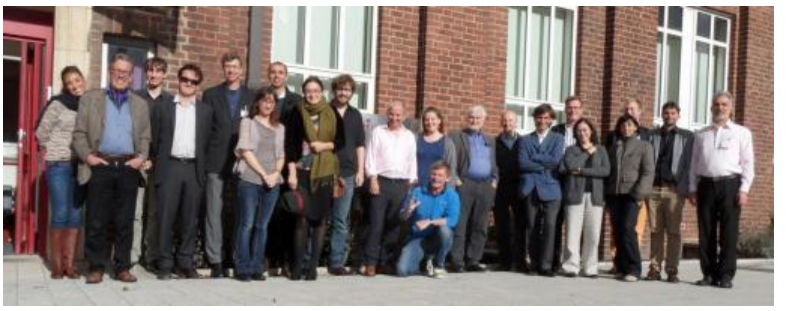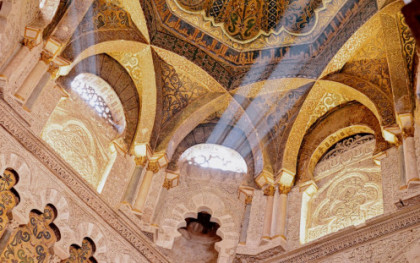Between October 17th and 19th, 2014 the workshop The Qanāt: Archaeology and Environment was held at the Department of Archaeology, Durham University. The workshop organisers were grateful for the support of BISI, as well as the British Institute for Persian Studies, the British Foundation for the Study of Arabia, and the Institute of Advanced Study at Durham University. The aim of the workshop was to bring together archaeologists, water engineers, geographers, and historians to discuss the state of research on qanāt technology across the old world (the Middle East and Central Asia, North Africa, and Southern Europe). The workshop addressed three key themes: methodologies for detecting and investigating qanāts; environmental change, sustainability and resilience; and the origins and chronology of qanāt technology with a focus on advances in absolute dating techniques.
Papers on recent surveys and excavations of qanāt systems in southeast Arabia were presented by Carmen Del Cerro (Autonomous University of Madrid) and Dave Moger and Derek Kennet (Durham University). Carmen’s work, and that of her team, has produced a spectacular and unique record of a falaj system and associated irrigation network at al Madam in the UAE. Dave Moger and Derek Kennet (Durham University) have utilised remote sensing, and ground based survey to map several qanāt systems, and have undertaken the excavation of one of the qanāt mounds near Rustaq in Oman in attempt to understand its construction and date. Furthermore, Peter Magee (Bryn Mawr) offered a longue-durée perspective on water exploitation in Southeast Arabia including the development of qanāt technology.
The applications of remote sensing utilising aerial photography and satellite imagery for detecting qanāts was highlighted by Dan Lawrence and Niko Galiatsatos (Durham University), and Louise Rayne (Durham University). These presentations emphasised the usefulness of combining remote sensing with environmental and historical data, and ground-based survey to better understand the relationship between settlement patterns and the development of qanāt systems. Louise Rayne’s example of a multitude of qanāt systems, and archaeological sites in the Sinjar region of Iraq also brought into focus the value of remote sensing in areas which are at present inaccessible to groundbased survey.
Dale Lightfoot (Oklahoma State University) presented an extensive overview of the work he has been undertaking on the identification, and mapping of karez (qanāts) in Iraq. Many of these systems have been abandoned resulting in the depopulation of villages where communities could no longer access water. His work has been documenting this important part of Iraq’s cultural heritage and providing guidance for a UNESCO project to rehabilitate karez systems in Iraq. His work highlighted the need and the progress made in bringing some of these systems, and the communities they provided water for, back to life.
Case studies on the mapping and/or excavation of qanāt systems were presented by Ahmad Shams (Durham University), and Thierry Gonon (Éveha) in different parts of Egypt. Mark Manuel (Durham University) also presented on the use of survey along qanāt lines in the central Plateau of Iran to detect Neolithic and Chalcolithic sites that might be otherwise buried.
Morteza Fattahi (University of Tehran/Oxford University) presented an overview of the role of the qanāt in Iranian society both past and present, as well important work on the absolute dating of qanāts by OSL (Optically Stimulated Luminescence) dating. The application of this technique, and that of micromorphology (studying the make-up of the sediments to understand depositional processes etc.) to qanāt dating was further expounded upon by Ian Bailiff and Lisa Snape-Kennedy (Durham University). Their work has been undertaken on a qanāt system in Spain along with Chris Gerrard (Durham University) who also presented an overview of qanāt technology in Spain. Finally, Maurits Ertsen (Delft University of Technology) challenged the audience to think about the ease or difficulty of the development of qanāt technology and the current models of the diffusion of this technology.
Overall, the workshop highlighted the need for a new agenda to guide research into the development of qanāt technology, inspired discussion on methodological approaches, and pointed out the need for understanding the challenges faced in maintaining or rehabilitating this sustainable water technology in the face of environmental change.
Participants (from left to right on phote): Miriam Parra, Hugh Kennedy, Ruaridh Ellison, Peter Magee, Dale Lightfoot, Lisa Snape Kennedy, Ahmed Shams, Louise Rayne, Dave Moger, Chris Gerrard, Kristen Hopper, Derek Kennet (seated), Tony Wilkinson, Ian Bailiff, Thierry Gonon, Maurits Ertsen, Alejandra Gutiérrez, Carmen del Cerro, Rune Rattenborg, Julien Charbonnier, and Morteza Fattahi.




